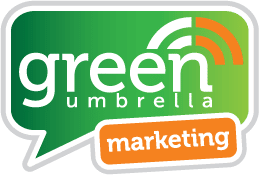How to get more from your web traffic with CRO

How to get more from your web traffic with CRO

Conversion rate optimisation – commonly abbreviated to CRO – is often overlooked in favour of more technical SEO strategies. Both seek to optimise and get the best possible value from digital content, naturally leading to some overlap between the two. Yet while the point where one process ends and the other begins is anything but clean-cut, CRO is too often considered an afterthought.
While SEO hones in on making your content search engine-friendly, CRO is all about what happens when users land on your site. The aim is to convert existing traffic in a way that contributes towards your overall site goals – be it through making a purchase, signing up to a newsletter or even downloading a brochure, app or white paper.
In a recent study by Econsultancy, 98% of respondents agreed that CRO is important to their overall digital marketing strategy. Successful CRO practices involve getting to know your audience and understanding what additional steps you could be taking to encourage them to convert. Here are just a few ways to use CRO to get more from your web traffic.
Why choose CRO?
Content that encourages users to take action is the first step towards achieving wider conversion goals. Yet investing in CRO boasts many additional benefits too, including:
- The opportunity to closely analyse the typical user journey on site, leading to a deeper understanding of audience behaviour
- Increased conversions from existing traffic and a reduced need for costly advertising campaigns
- Improved SEO-related metrics, such as lower bounce rates and increased session length
- Enhanced user experience that encourages positive brand engagement
Set specific goals
Before you implement a CRO strategy, work towards defining your conversion goals as precisely as possible. This will not only help to structure your efforts moving forward but will enable you to accurately measure key metrics throughout the process.
More often than not, conversion goals relate directly to sales and online purchases – but that isn’t always the case. Email signups, account creation and resource downloads are also common conversion types. Understanding exactly what you want from your user is crucial to define your CRO strategy. An online fashion retailer wanting to hit a specific revenue target is going to have a different approach to an academic aiming for more ebook downloads, for instance.
Test, test and test again
Let’s assume that you’ve optimised your site with relevant, high-quality content. You’ve built a vast catalogue of valuable backlinks and traffic is at an all-time high, yet you’re still not achieving your optimal conversion rate. The only way to determine why users aren’t taking those extra steps is to put yourself in their position, rigorously testing the site in order to understand more about the user journey.
Google Analytics offers access to a host of metrics and reports that can help you gain a clearer view of the user journey from the top level. An overview of conversion numbers by browser and/or device can be the first step in pinpointing specific performance issues, while funnel visualisations make it easy to see exactly where traffic is dropping off throughout the conversion journey.
Take action
Much like SEO, no CRO strategy serves as a one-size-fits-all solution. Ensuring that your website is fully optimised in a way that naturally encourages conversions can be a tall ask, yet there are a number of first steps and initial considerations that can help to point you in the right direction:
Focus on strong CTAs
Clear calls to action are vital when it comes to encouraging conversions from your content, yet you’d be surprised how often they’re overlooked. Landing pages with CTAs located above the fold can generate up to 220% more leads than those without, highlighting the importance of presenting users with a clear next step on every page.
Deliver great content marketing
The relationship between content marketing and conversion is clear. After all, effective content marketing strategies are all about encouraging users to take action through the delivery of content that’s engaging, informative and ultimately valuable to its audience. Focus on producing high-quality content that clearly signposts your audience towards conversion.
Simplify the conversion process
It might sound obvious, but complex steps leading to conversion can directly impact conversion rates. Often the most effective first stage is to strip back the process, cutting out unnecessary data filling forms and making the journey from key landing pages to conversion as streamlined as possible.
As brands and businesses continue to draw viable links between user experience and conversion rates, CRO stands a real chance of becoming the digital marketing industry’s hottest buzzword. Content that’s well optimised for search engines has the potential to drive organic traffic towards your site, yet it’s ensuring that the content is also optimised for the user that will bring about valuable conversions.
Share this!

